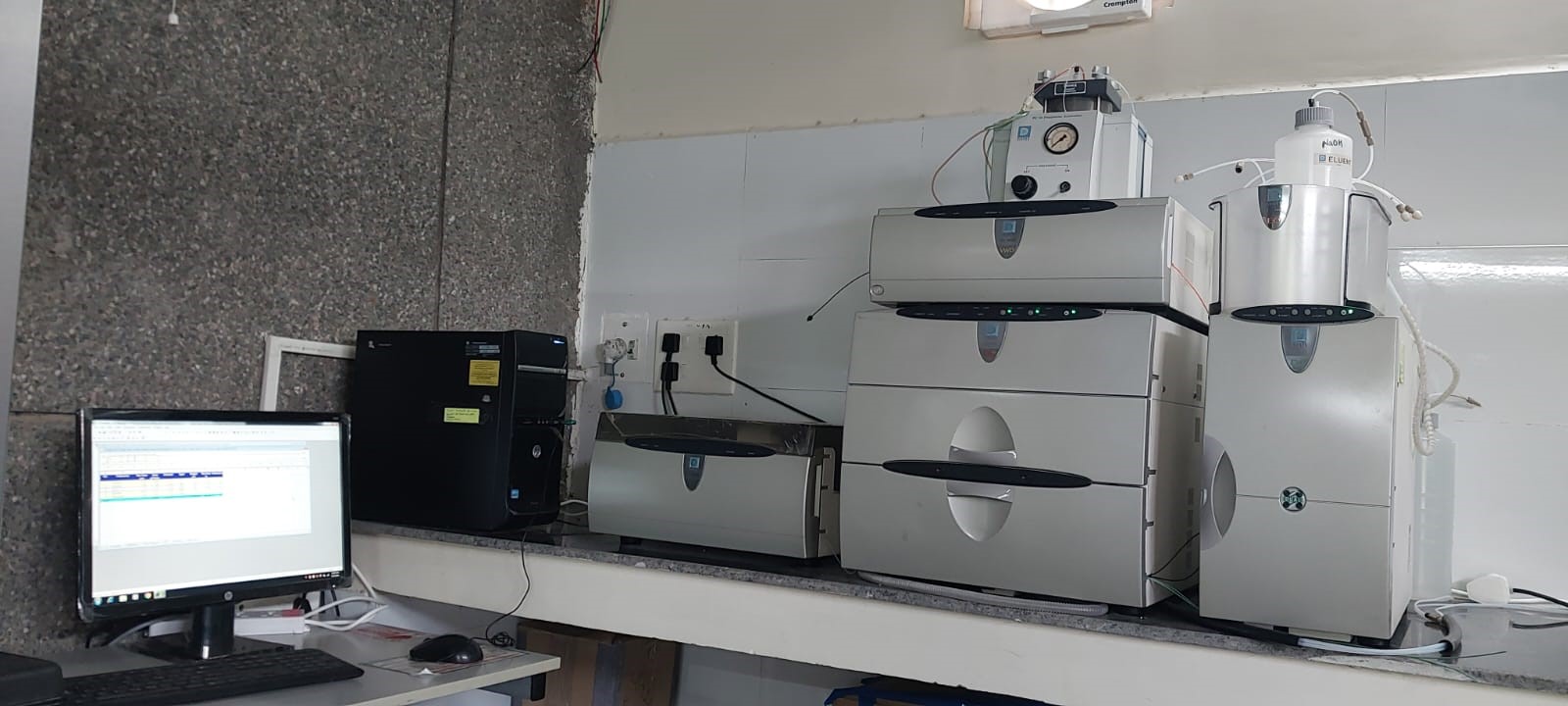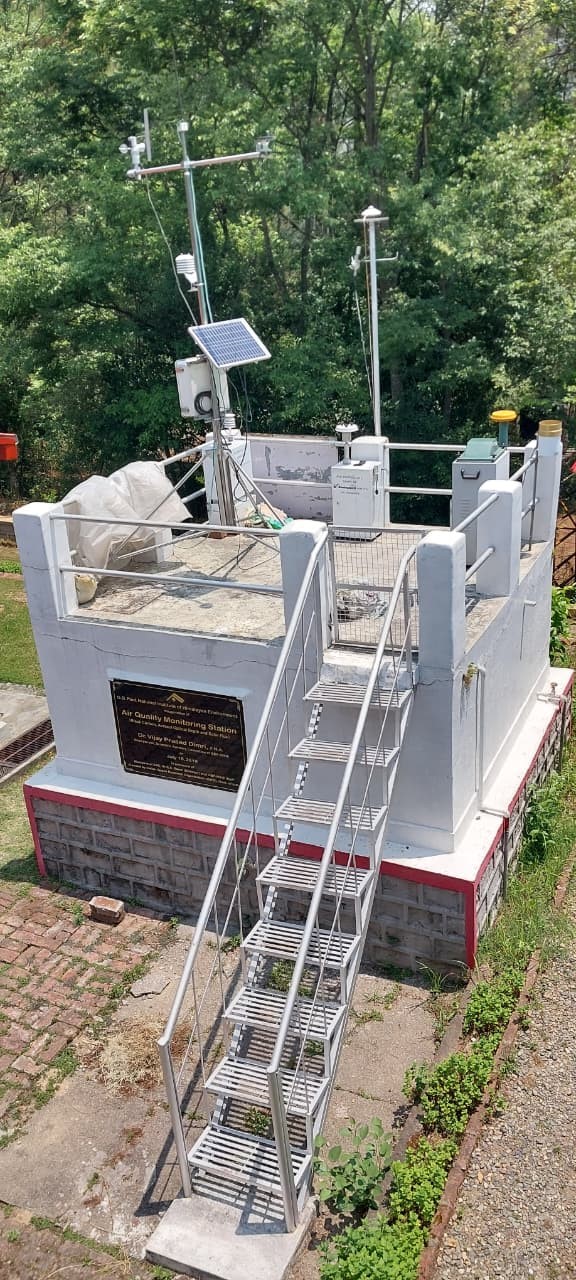Gaseous Air Pollution in the background sites of Sprawling Urban Environment in the Himachal Pradesh & Uttarakhand under Environmental Observatory
Air quality monitoring in the Himalayan region is of great importance due to its ecological fragility and strategic geographical location. While much research has focused on the Indo-Gangetic Plain (IGP) and other metropolitan regions of India, relatively little is known about background and semi-urban sites in the Indian Himalayan Region (IHR). Establishing background concentrations of gaseous pollutants like nitrogen dioxide (NO₂), sulfur dioxide (SO₂), and ammonia (NH₃) is therefore a primary goal of this project. In this study, two representative semi-urban sites were selected—one at Kullu-Mohal, Himachal Pradesh (31.91°N, 77.12°E, 1154 m amsl) and the other at Kosi-Katarmal, Almora, Uttarakhand (29.64°N, 79.62°E, 1225 m amsl). Both sites are semi-urban, influenced by local anthropogenic sources such as vehicular emissions, domestic biomass burning, small-scale industries, and agricultural/horticultural activities, while also being impacted by long-range transported pollutants from the IGP. At Kullu, an Automatic Gas Analyzer setup continuously measured multiple gaseous species (CO, CO₂, O₃, NO, NO₂, NOx, SO₂). At Almora, manual impinger-based sampling was employed, where air was bubbled through absorbing solutions for specific pollutants and later analyzed in the laboratory using spectrophotometric methods. These dual approaches allow comparison between high-resolution continuous monitoring and integrated manual measurements, which can establish reliable background concentration values. By determining baseline levels of NO₂, SO₂, and NH₃, the study provides valuable reference points for the region. Air pollutants are strongly governed by meteorological parameters such as temperature, relative humidity, rainfall, wind speed, wind direction, and boundary layer height (BLH). By correlating gaseous pollutant concentrations with meteorological variables, we can distinguish between local emissions and transported pollutants. The ultimate aim of this research goes beyond scientific observation—it seeks to provide actionable insights for air quality management policies in the Himalayan region. Based on pollutant measurements and meteorological relationships, several recommendations can be drawn:
Objective
• To measure concentration of gaseous pollutants (NO2, SO2, & NH3) to establish background values in the Himalayan region.
• To observe local meteorological parameters and relate these with gaseous pollutants, and analyze in the background of long-range transport sources.
• To suggest some feasible mitigating measures implementing at the policy level.
Study Site
• GBPNIHE Kosi-Katarmal Almora Uttarakhand.
• GBPNIHE Himachal Pradesh Regional centre Kullu Mohal
At Mohal–Kullu, Himachal Pradesh, clear seasonal variability was observed in gaseous pollutants. Sulphur dioxide peaked in winter due to enhanced combustion and low OH levels, while heavy rainfall during monsoon reduced concentrations through washout. Carbon dioxide showed the highest levels in April (344.13 ppm) and the lowest in October (110.14 ppm), indicating a ~68% seasonal drop. Carbon monoxide reached maximum values in winter (0.56 ppm in January) and minimum in April (0.16 ppm), showing ~71% variation. Surface ozone exhibited strong summer enhancement with a peak in June (26.17 ppb), while winter values were as low as 4.52 ppb, an ~82% difference, reflecting strong photochemical control. At Kosi–Katarmal, SO₂ (7.2 µg/m³) and NO₂ (5.89 µg/m³) showed maxima in May as well as in winter, linked to biomass burning and shallow boundary layer height. Comparison between 2019 and 2024 averages indicates that NO₂ remained almost stable with only a 0.75% increase, SO₂ rose sharply by about 422.5%, while NH₃ declined by nearly 39.7%, highlighting distinct emission trends and climate–pollutant interactions over the five-year period. Both SO₂ and NO₂ exhibited negative correlations with temperature, humidity, and rainfall, whereas NH₃ showed positive correlations and remained within NAAQS limits. Back-trajectory analysis revealed marine air intrusions during monsoon leading to cleaner conditions, while polluted continental air masses from north-western India dominated in other seasons. Collectively, the results highlight strong seasonal and transport-driven variability across Himalayan sites and underline the need for biomass burning control, forest fire management, and seasonal monitoring to sustain regional air quality.

Fig.1 Ion Chromatograph IC at Kosi-Katarmal Almora

Fig. 2 Air Quality monitoring Station at Kosi-Katarmal Almora

Fig. 2 Air Quality monitoring Station at Kosi-Katarmal Almora



